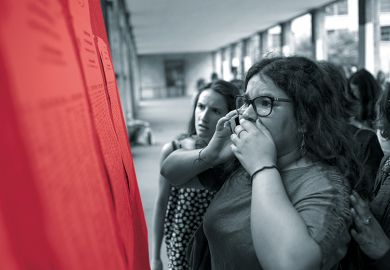University initial teacher training (ITT) providers will be able to recruit as many students as they want under radical new plans being introduced by the government for the next academic year.
Until today’s decision by the National College for Teaching and Leadership – the government agency in charge of teacher supply – ITT providers would bid for places and subsequently be allocated numbers in the autumn. Following changes in policy direction towards a school-led training system, universities have been left with fewer core places to fill each year, placing them under additional pressure.
In announcing the changes today, Charlie Taylor, chief executive of the NCTL, said the college wanted to give providers “the freedom and flexibility to recruit the trainees you need”.
“We know that you have often found our allocations process complicated and you have been frustrated when you have not received the number of places you asked for,” he said. “We have therefore simplified the process for the distribution of ITT places, and for the 2016 to 2017 academic year we will not be making direct allocations.
“Instead, we will be giving you the chance to recruit up to the number of trainees required nationally within a set of clear controls.”
The NCTL said they would “monitor recruitment” over this period to inform their allocations methodology for 2017-18, and that they “will only approve School Direct and provider-led courses where the ITT provider is graded 'good' or 'outstanding' [by Ofsted] for overall effectiveness in the relevant phase of provision.”
James Noble-Rogers, executive director of the Universities’ Council for the Education of Teachers, said this was a “significant change that could be made to work”, but warned that the national allocations target should be apportioned fairly between HEIs and school-led teacher training routes to ensure teacher supply.
“Our main concern is that the HEIs’ share of the allocations pot should be sufficient in size to maintain the existing infrastructure and stability in the teacher supply base,” he said. “Secondly, there needs to be scope to shift recruitment across the two pots to maximize recruitment levels.
“Thirdly, care [must be] taken for applicants who have applied for places that haven’t been offered when national caps were applied, aren’t unfairly treated. There has to be flexibility in the system.”
Sean Cavan and David Owen, both from Sheffield Hallam University’s Sheffield Institute of Education, said they “broadly welcome the methodology” but echoed Mr Noble-Rogers’ calls to maintain HEIs’ role in the system.
“The NCTL needs to ensure that the proportions of places which are available to HEIs reflect the relative success which HEIs have had in recruiting to previous targets as part of their key role in meeting teacher supply needs for the nations' schools,” they said.
But a joint statement from Universities UK and GuildHE warned that the changes may actually be “detrimental to overall recruitment in ITT” and could affect the quality of students recruited and “institutional viability”.
“Within the fixed market that these change introduce, there will be no guaranteed minimum intake level for university provider-led courses,” the statement said.
“This instability affects the viability of course delivery, reduces the capacity of universities to plan over the long-term and may impact on the ability of universities to support their partnership schools. The changes could, in certain instances, lead to universities withdrawing from specific subjects or from the ITT market altogether.”
It added that universities also played a "key role" in supporting the system through partnerships with Teach First and Schools Direct providers, the provision of professional development courses and research into "what works and underpins best practice within the classroom".
“Universities have been working constructively with government departments and bodies to support a partnership-led system to ensure that its teachers are of sufficient quality and of sufficient number across all required disciplines. Already, this challenge is not being fully met. It is unlikely that the allocation system announced today will remedy this.”
Register to continue
Why register?
- Registration is free and only takes a moment
- Once registered, you can read 3 articles a month
- Sign up for our newsletter
Subscribe
Or subscribe for unlimited access to:
- Unlimited access to news, views, insights & reviews
- Digital editions
- Digital access to THE’s university and college rankings analysis
Already registered or a current subscriber? Login




